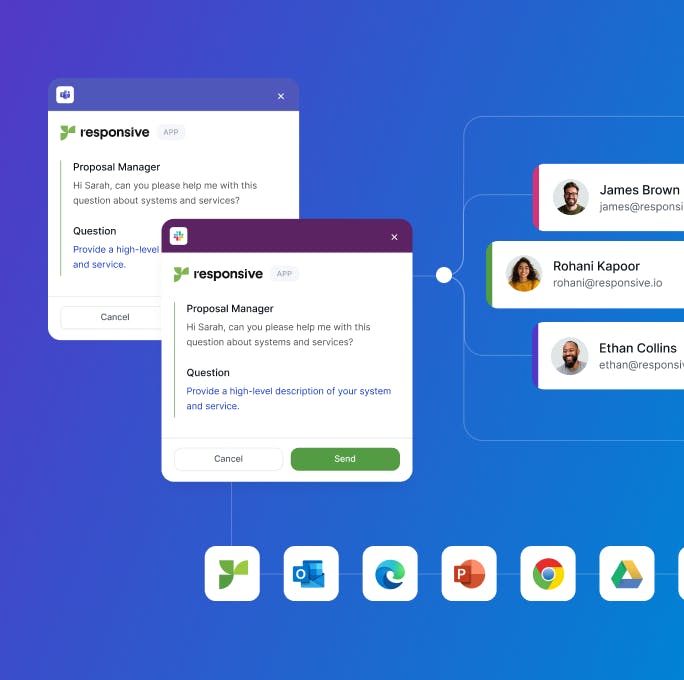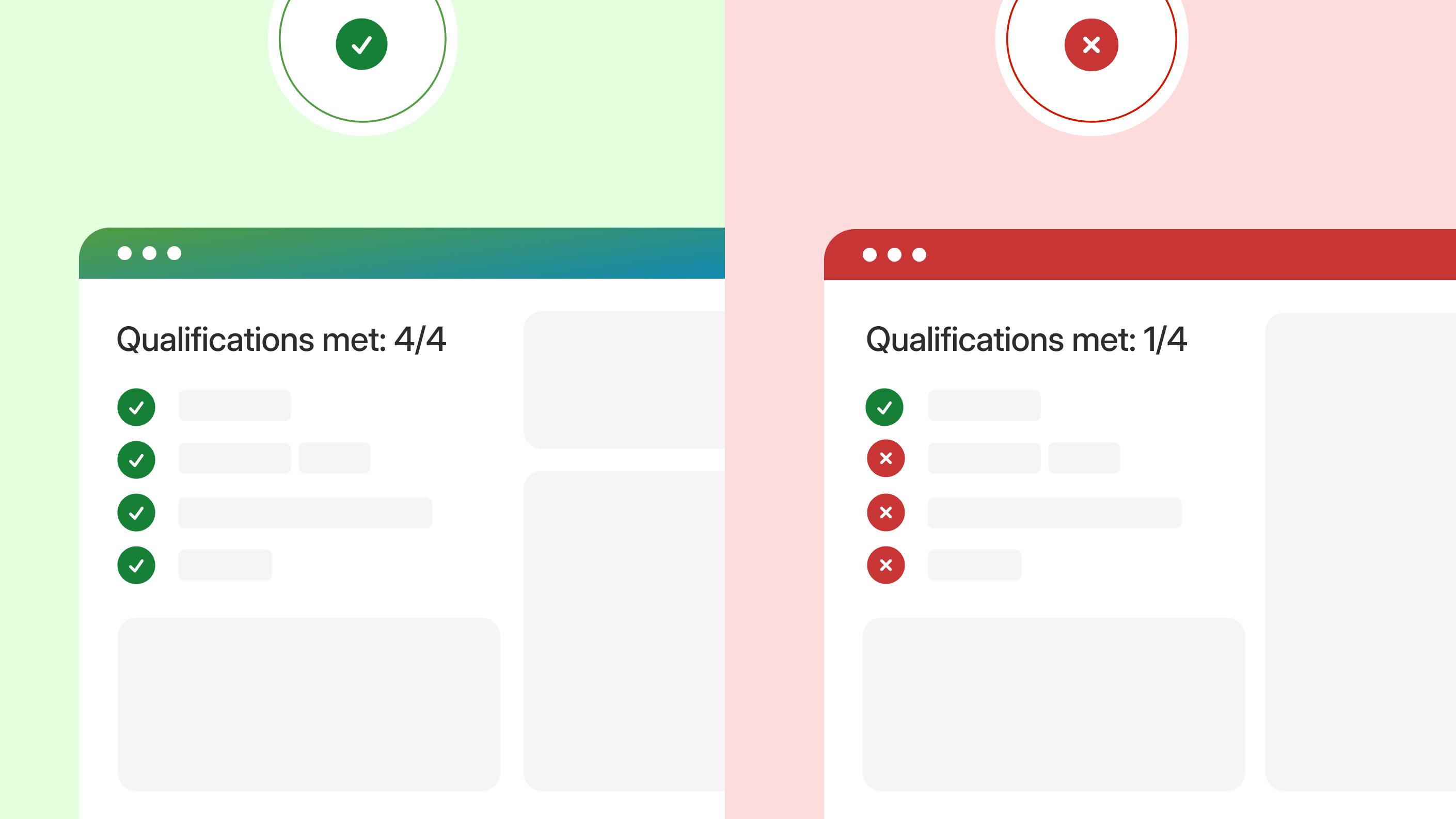Once viewed as a back-office process, sourcing has evolved to become a high-stakes function that now plays a central role in how businesses compete and grow.
Strategic sourcing platforms help teams issue RFPs, evaluate vendors, and collaborate cross-functionally. But with buyers now expecting speed, transparency, and personalized experiences, selecting the right platform makes the difference between meeting your objectives and watching competitors pull ahead.
In this post, we’ll cover the must-have capabilities to prioritize in a strategic sourcing platform, how to evaluate vendor maturity, and what sets top-performing sourcing teams apart from the rest. Whether you're upgrading from a legacy system or looking to scale your team’s impact, this is your guide to choosing sourcing software that supports smarter, faster decisions.
Why strategic sourcing looks different today
Strategic sourcing is evolving from a cost-control function into a competitive differentiator. Today’s sourcing leaders face tighter budgets, more complex buying cycles, and growing pressure to respond with speed and precision.
At the same time, external forces like supply chain disruptions, ESG requirements, and compliance risks are raising the stakes, forcing teams to do more with less. As a result, sourcing is no longer just about procurement execution; it's about enabling smarter, faster, and more collaborative decisions across the business.
Buyer behavior is also driving change. Prospects now engage vendors later in the cycle and expect proposals tailored to their specific needs from the very first touch. They want speed, customization, and proof of value — without sacrificing compliance or attention to detail. These expectations can leave sourcing teams scrambling unless they have the tools to anticipate requirements and deliver high-quality responses under pressure.
To keep up, sourcing must become a cross-functional discipline. Procurement alone can’t manage the volume and complexity of today’s RFPs, RFIs, and questionnaires. Legal, IT, security, finance, and business stakeholders all play a role, which means platforms need to support real-time collaboration, content reuse, and visibility into every step of the process. Teams that can align across functions move faster, and they also make better, more defensible decisions.
Technology and AI are amplifying these shifts. Leading organizations now use AI to surface recommended vendors, flag noncompliant answers, and draft responses that meet internal standards. But the real power comes when AI is embedded within the workflow, enabling teams to reduce manual work, improve accuracy, and focus on the sourcing strategies that drive long-term value. In this new environment, sourcing isn’t just a process — it’s a strategic growth lever.
What to look for in a strategic sourcing platform

Choosing the right strategic sourcing platform is about finding a system that fits the way your team works and scales with the complexity of the sourcing events you manage. Below are four capability areas to prioritize when evaluating platforms.
Centralized knowledge and content reuse
Too many sourcing teams waste time chasing down answers. A centralized content hub — paired with smart reuse capabilities — can eliminate that drag. Fortunately, there are now platform offerings that allow you to store approved content, assign ownership, and surface relevant answers instantly.
The benefits? Faster request creation, more consistent messaging, and fewer last-minute bottlenecks. According to the 2025 State of Strategic Response Management (SRM) Report, 88% of high-growth organizations have some form of centralized knowledge management in place compared to just 67% of their peers.
Workflow and collaboration management
An excellent sourcing platform digitizes and helps you coordinate your process. Look for features that support real-time collaboration, in-platform communication, deadline management, and reviewer workflows. Request Projects, for example, lets teams assign SMEs, exchange clarifications, and issue deadline extensions — all without leaving the platform.
This kind of functionality enables consistent execution at scale, helping you manage more sourcing events without adding headcount or introducing more friction.
AI-powered assistance and automation
AI quickly evolved from being a buzzword to being a competitive advantage. The best sourcing teams use AI to draft responses, analyze win/loss data, manage intake, and even recommend bid/no-bid decisions. As detailed in the 2025 SRM Report, high-growth teams are six times more likely to have fully deployed AI agents, and three times more likely to use AI across revenue functions.
Microsoft uses Responsive to support more than 18,000 sellers globally — and saved $17 million by centralizing responses, automating repetitive work, and making it easier for teams to collaborate across regions and functions. Their success shows that when AI is embedded in the right platform, it doesn’t just save time — it helps teams scale smarter and win more work.
Look for platforms that support AI-assisted response generation using your organization’s best content, as well as agent-based workflow orchestration to keep requests moving.
Visibility and analytics
Your sourcing platform should manage tasks and provide clarity into what’s happening and where to improve. When dashboards and reporting tools are built into the platform — not bolted on after the fact — teams gain real-time visibility into every stage of the sourcing process.
Dashboards and reporting tools can help to:
- Track time savings and team performance
- Surface response trends and insights
- Connect sourcing outcomes to revenue impact
Platforms that pair analytics with audit trails also make it easier to maintain compliance and report on results across functions.
Clear vendor qualification and decision-making support

Deciding whether to pursue a sourcing opportunity can be complex. The right platform simplifies your bid/no-bid decisions by consolidating relevant data — past performance, internal feedback, and risk indicators — in one accessible place. Instead of starting fresh or relying on disjointed input from multiple sources, teams can review historical context and insights within the same system they use to manage responses.
Responsive’s Request Projects supports qualification workflows by surfacing prior answers, tracking stakeholder reviews, and enabling collaborative decision-making across sourcing, legal, and compliance. This helps reduce time spent deliberating and ensures go/no-go decisions are informed, consistent, and aligned with strategic priorities.
Secure, compliant infrastructure with enterprise-grade privacy controls
Sourcing teams regularly work with sensitive documents and data — pricing details, financial information, security assessments, and legal disclosures. That’s why security and compliance can’t be an afterthought. A strategic sourcing platform needs role-based permissions, encryption, audit trails, and enterprise-grade privacy features that satisfy both internal standards and external regulations.
This becomes even more important for regulated industries like healthcare, government, and financial services. Seek out vendors with third-party certifications such as SOC 2 and ISO 27001, plus infrastructure built to support granular access control and data integrity. As outlined in Responsive’s AI Handbook for SRM and CIO AI Software Checklist, security is foundational to trust, adoption, and scale — not merely a procurement concern.
Why top teams choose Strategic Response Management platforms
Not all sourcing software is built to win business. Many tools focus solely on procurement logistics: issuing RFPs, scoring vendor responses, and managing contracts. That’s important, but it’s only part of the picture.
SRM platforms like Responsive go further. They help teams orchestrate high-stakes responses across functions, bring content and collaboration into one place, and pair AI with human expertise to improve both efficiency and outcomes. From RFPs and RFIs to DDQs and security questionnaires, SRM platforms support every type of information request at scale.
That’s why high-growth teams are opting for purpose-built platforms that enable both sourcing execution and revenue enablement, and choosing to invest in SRM.
Questions to ask during your evaluation
When comparing vendors, make sure you go beyond feature checklists. Ask yourself:
Can our teams generate and customize responses with AI using our approved content?
Look for platforms that allow teams to generate responses using your internal content library, past RFP submissions, and approved messaging. Some tools also support AI-generated first drafts that can be reviewed and tailored by SMEs, which can significantly reduce turnaround time without sacrificing quality.
Can SMEs and stakeholders collaborate and self-serve on one platform?
The strongest platforms offer role-based access, in-platform messaging, and workflows that make it easy for SMEs to contribute without relying on email or external tools. This ensures cross-functional stakeholders can review, approve, or update content independently, which helps keep sourcing events on schedule.
What support does the vendor offer for onboarding and change management?
Evaluate whether the vendor offers implementation and training support tailored to your team’s needs. Some platforms provide professional services like Responsive’s Professional Services that go beyond basic onboarding — helping with user enablement, workflow configuration, content migration, and long-term adoption planning. This can be especially valuable for teams undergoing process change or scaling usage across departments.
What visibility will we have into team activity, cycle times, and response effectiveness?
Look for built-in analytics that surface performance metrics such as average response time, team participation, content usage, and win/loss trends. Dashboards should be easy to configure and export, with filters that help stakeholders understand what's working and where process improvements are needed.
How does the platform scale as our sourcing volume grows?
Scalability depends on the platform’s ability to manage higher volumes of requests without creating bottlenecks. Features like reusable templates, automated workflows, and content governance tools can help larger teams maintain consistency and speed as sourcing events increase in frequency or complexity.
Future-proof your sourcing team with Responsive

Responsive helps teams centralize knowledge, accelerate collaboration, and win more work. Used by over 2,000 organizations to manage RFPs, RFIs, DDQs, and security questionnaires, Request Projects supports high-volume sourcing with automation, AI, and enterprise-grade governance.
With Responsive, you can:
- Author and publish requests faster
- Collaborate seamlessly with internal teams
- Reduce risk and improve accuracy with content reuse
- Respond to vendors in one secure, central platform
If you’re ready to explore how Responsive can help your sourcing team respond faster and better, request a demo to see the platform in action.
